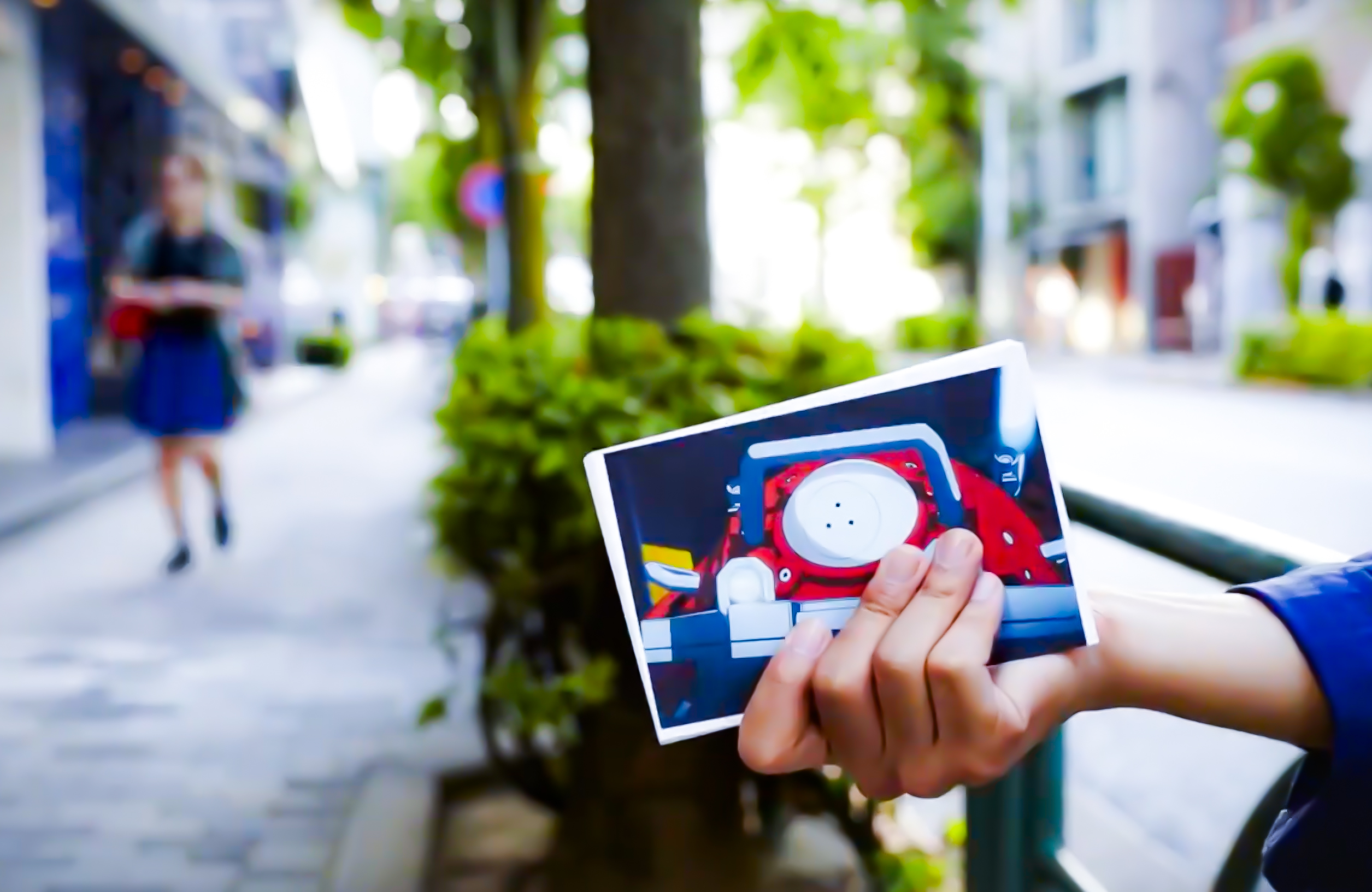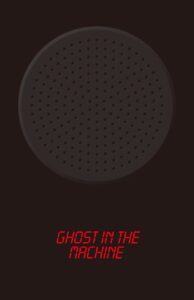
Keigo Oyamada’s Three Years Expressing a Cyberbrain Society in Music -Synergies Between Ghost in the Shell and Cornelius- #01
Text: Satoshi AsaharaGhost in the Shell: Arise began as the third video series based on the original manga by Shirow Masamune. Cornelius (also known as Keigo Oyamada) produced the music that complemented this bold series in its re-imagining of the intriguing elements of the original Ghost in the Shell, including updated character designs for the members of Public Security Section 9. Oyamada wrote and produced the music used in the series roughly over a span of three years, not limited to the main and ending themes.
How did he arrive at the sound that so effectively entices listeners’ imaginations? In this interview, we discussed Oyamada’s stances and standards as well as his personal memories of anime soundtracks.
#01 The Chemistry of "Ghost in the Shell" and Buddha Machines
——Did you like sci-fi anime before becoming the composer for Ghost in the Shell: Arise?
Keigo Oyamada(“Oyamada” below): I loved Space Battleship Yamato and Galaxy Express 999 as a kid, but I wasn’t too deeply into any anime series after that. I guess that Mobile Suit Gundam also took off when our generation was in elementary school or so. Gunpla models were trendy then, and I tried some, but got bored of it after making two or three. (Laughter) After that, the Ghost in the Shell manga and film started to gain prominence, and of course I knew of them, but I hadn’t actually seen them as of when I got the offer to produce music for them.
——Which Ghost in the Shell title did you encounter first?
Oyamada: I remember checking out Stand Alone Complex first. It was the latest TV series at the time. I watched it and it was better than I had imagined. It was really grounded in the cyberpunk and hard sci-fi realm, as entertainment for adult audiences. It had detective elements, too, and moved at a good pace with 20-minute episodes. I got really immersed in its world. After that I checked out the theatrical film Ghost in the Shell, and was shocked by how it was much higher quality than the anime I used to watch as a kid. So it made me feel that I was honored to make music for the new Ghost in the Shell: Arise; it was an opportunity.
——After that, you kept pace with the Arise series for a long time. Did you start with the opening theme for border:1 Ghost Pain?
Oyamada: That’s right. I made a lot of tracks, but I started on Ghost in the Shell Arise first, and I have the strongest attachment to that track. I had been told during meetings that the cyborg elements of Arise were about an internal question of “who and what am I?” The “existence of a soul” is a key topic in the series. I wanted something that would hint at that, and I also felt that electronic sounds would suit the series from the start. I felt it would be intriguing to make something that used a lot of mechanical, glitchy sounds, and have them coexist with live, physical instruments played by humans.
——So you started making music before the script was done?
Oyamada: I had only heard an overview when I started working, but not knowing the details too well gave me more freedom to be expressive, so it may have been a positive for me. Still, I was aware in my own way that this was an anime theme song, so I decided to have the voice of Maaya (Sakamoto) – who plays Motoko – for the title. Because the series title and hero’s name always appeared in the theme songs of the anime I watched as a kid, from Mazinger Z to Lupin the Third. They use new songs by popular bands for more recent anime, but sometimes they don’t really fit that well with the series settings. I didn’t want it to end up like that.
——The name Lupin is in the refrain of the theme song for Lupin the Third, whereas the word “ghost” is in the refrain of Ghost in the Shell Arise.
Oyamada: Yes, exactly. There’s that call of “Lupin Lupin Lupiiiin” to a Latin rhythm. That was central in my thinking. It’s incredibly easy to understand since they’re singing the title, and I still feel like that track is the pinnacle of anime soundtrack music, personally. And if you’re getting someone to sing it, then the protagonist’s voice is best. That was precisely why I wanted Maaya on the track, like Hiroshi Fujioka singing “Let’s Go!! Rider Kick” for his role in the Kamen Rider series. Mr. Fujioka wasn’t a singer, but Maaya’s a good singer, so I wasn’t concerned at all. (Laughter) But post-dubbing of anime soundtracks wasn’t a thing at the time, and she didn’t have a solid plan for performing Motoko at that time. So I just had her read basically a single line for a chorus type of thing and used her voice in the track that way, avoiding having her sing anything longer.
——After writing it first, did the theme song lead you toward the rest of the music used in the series?
Oyamada: It did. There was this whole selection of sounds I wanted to use in Ghost in the Shell Arise. It was like I just expanded those tone colors and phrases into the other tracks. Making the tone color consistent across the whole work formed a single unified setting. I felt that was a key point in working on a soundtrack.
——Did you have the past works of prominent composers in mind when you worked, like Kenji Kawai of Ghost in the Shell the film, or Yoko Kanno of Stand Alone Complex?
Oyamada: Of course I checked them out, and I was amazed by how high the quality of their music was, but I didn’t feel it would be best to reference them. At the same time, I also didn’t try to make changes deliberately. I just tried to go at it in my own way. Ghost in the Shell: Arise was a new series, and it had a new director. Plus, they called me in right when they were changing Motoko’s look and voice actress, so I was sort of free not to worry about the past too much.
——I suspect this is kind of a rarity only known by hardcore fans, but your favorite, Ghost in the Shell Arise, was also featured in the 2013 release of the Buddha Machine.
Oyamada: I had dreamed of making a Buddha Machine at that time, and when I told someone involved with Arise about that, they made it happen just like that. (Laughter) Apparently, they had wanted to release a physical product other than a CD to draw attention, right at the time. The Buddha Machine is a simple device that plays the encoded tracks as a refrain. It was originally used for chanting sutras but caught on around the world as a sort of background music box. I came up with the idea for the product name GHOST IN THE MACHINE and that there was a soul within it. It came from my interests, but I feel like it fits perfectly with the Ghost in the Shell setting.

——Were you doing an homage to the Ghost in the Shell: Arise OST album with the Buddha Machine design featuring digital text on a flat black body?
Oyamada: That’s right. Tracing it back, The Police released the 1981 album Ghost in the Machine with a jacket design using red digital text on a black background. And we were doing an homage to that. I’ve heard The Police were influenced by a book published in the 60s also called The Ghost in the Machine, but it’s the same for Ghost in the Shell. Going back to the soundtrack cover design, I felt that wireframes like from the film Tron would be ideal for expressing what cyborgs were, and there was some trial and error to get that right on actual paper. In the end, we used red paper and blacked it out, so that only the cut-out parts were red. It might have been a budget issue for a typical musician’s new release, but fortunately everyone involved with Ghost in the Shell was sympathetic to my views on physical craftsmanship. The music video quality also came out great, so I was delighted.
Continued to #02 Behind the Scenes of the Full METAFIVE Debut in 2014
KEIGO OYAMADA
Born January 27, 1969. A native of Tokyo. After Flipper’s Guitar disbanded in 1991, he began making music under the name Cornelius starting in 1993. He scored major hits with his albums THE FIRST QUESTION AWARD and 69/96, becoming a major mover within the Shibuya-kei movement at the time. In 2006, his video collection Sensurround + B-Sides was nominated for the Grammy Award for Best Immersive Audio Album at the 51st Annual Grammy Awards. He is broadly active in the musical field today, working on collaborations and remixes with Japanese and international artists as well as in music production.

